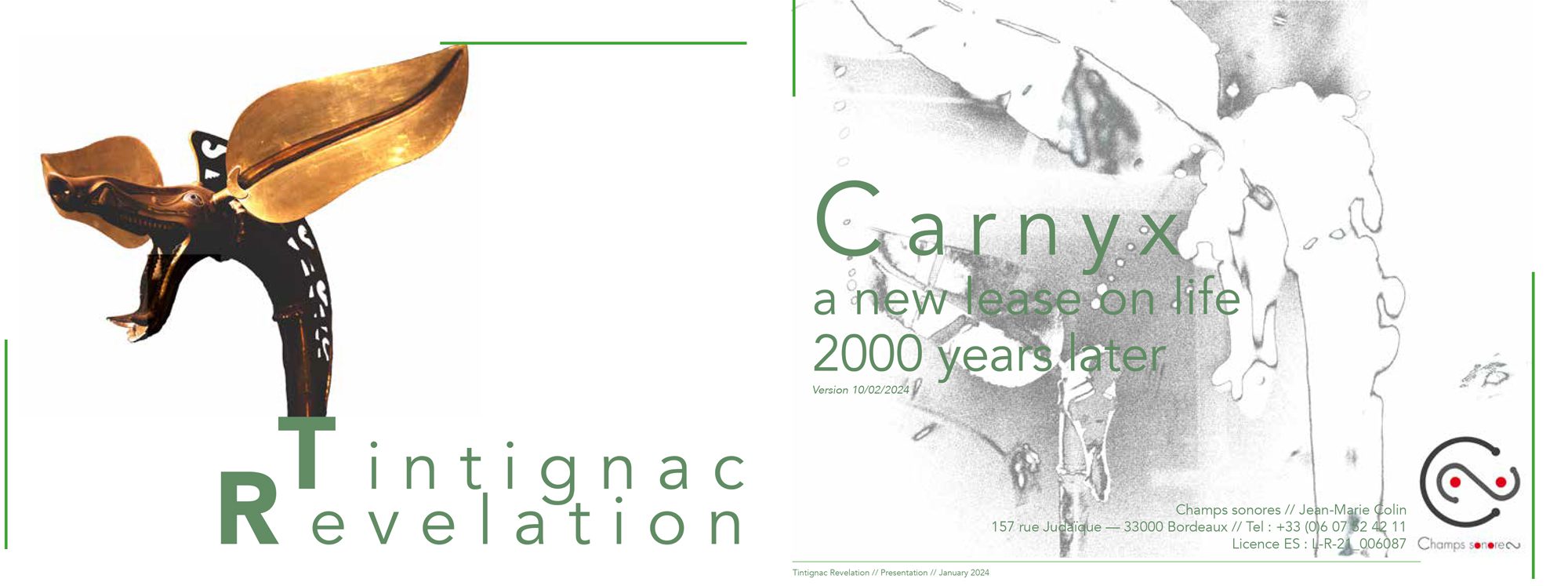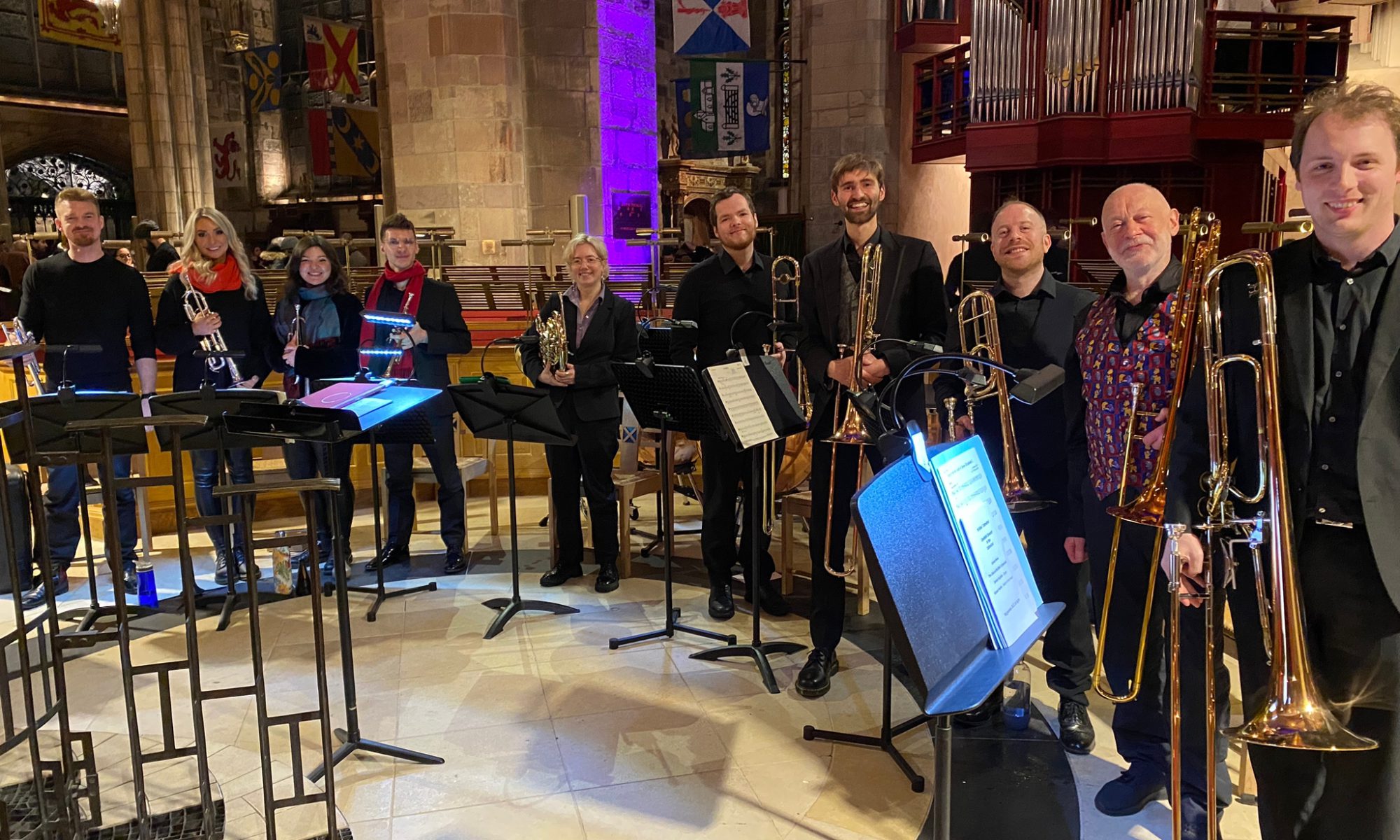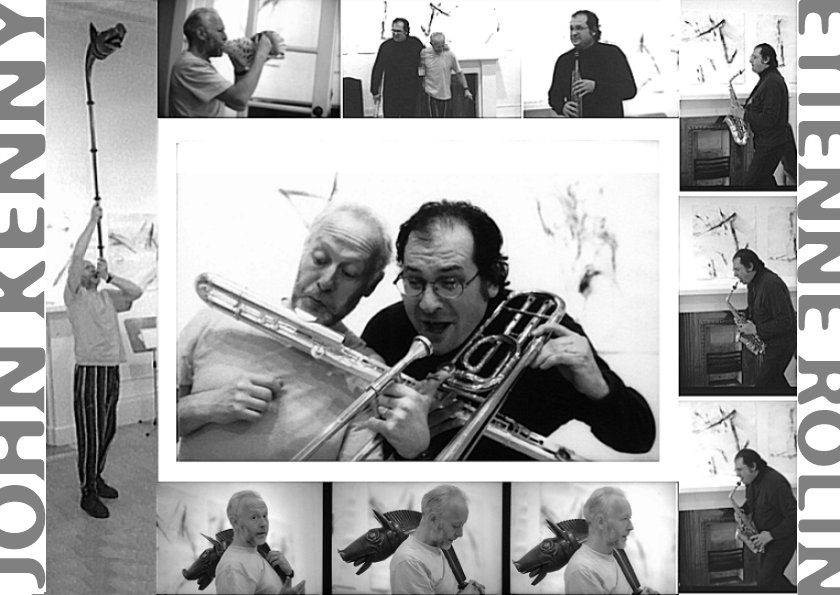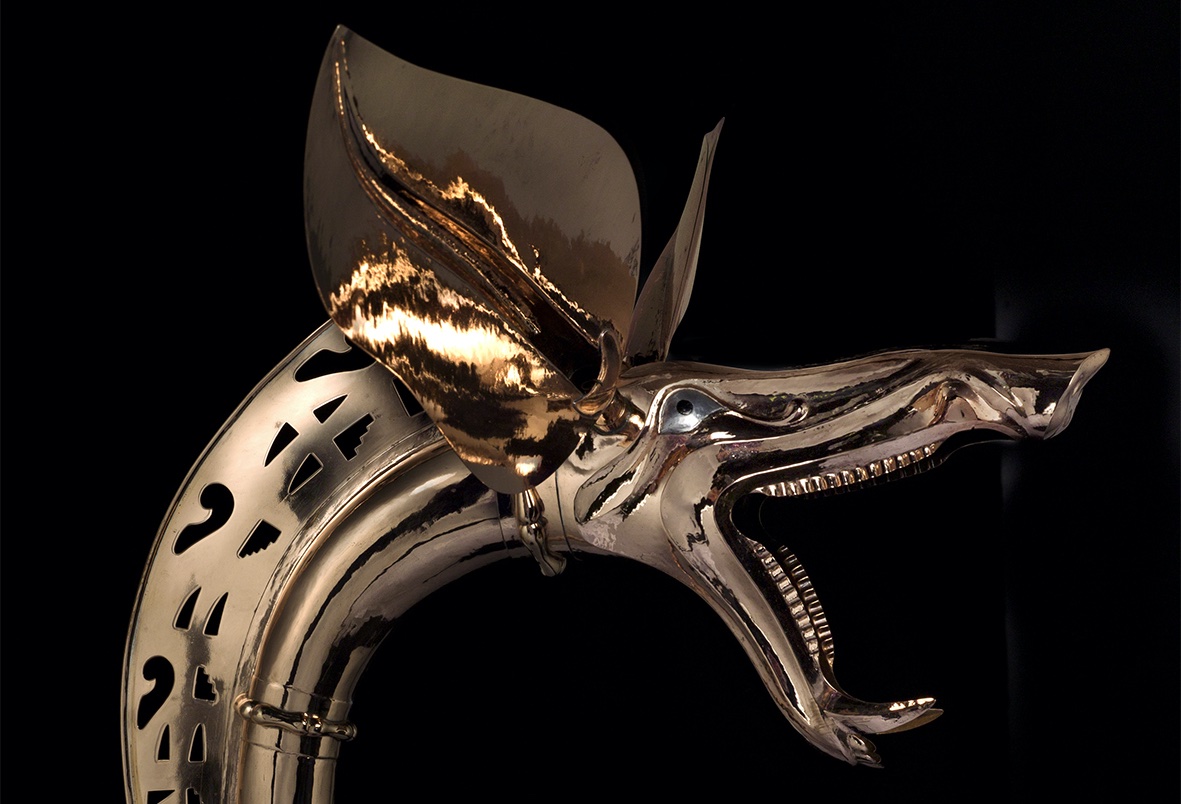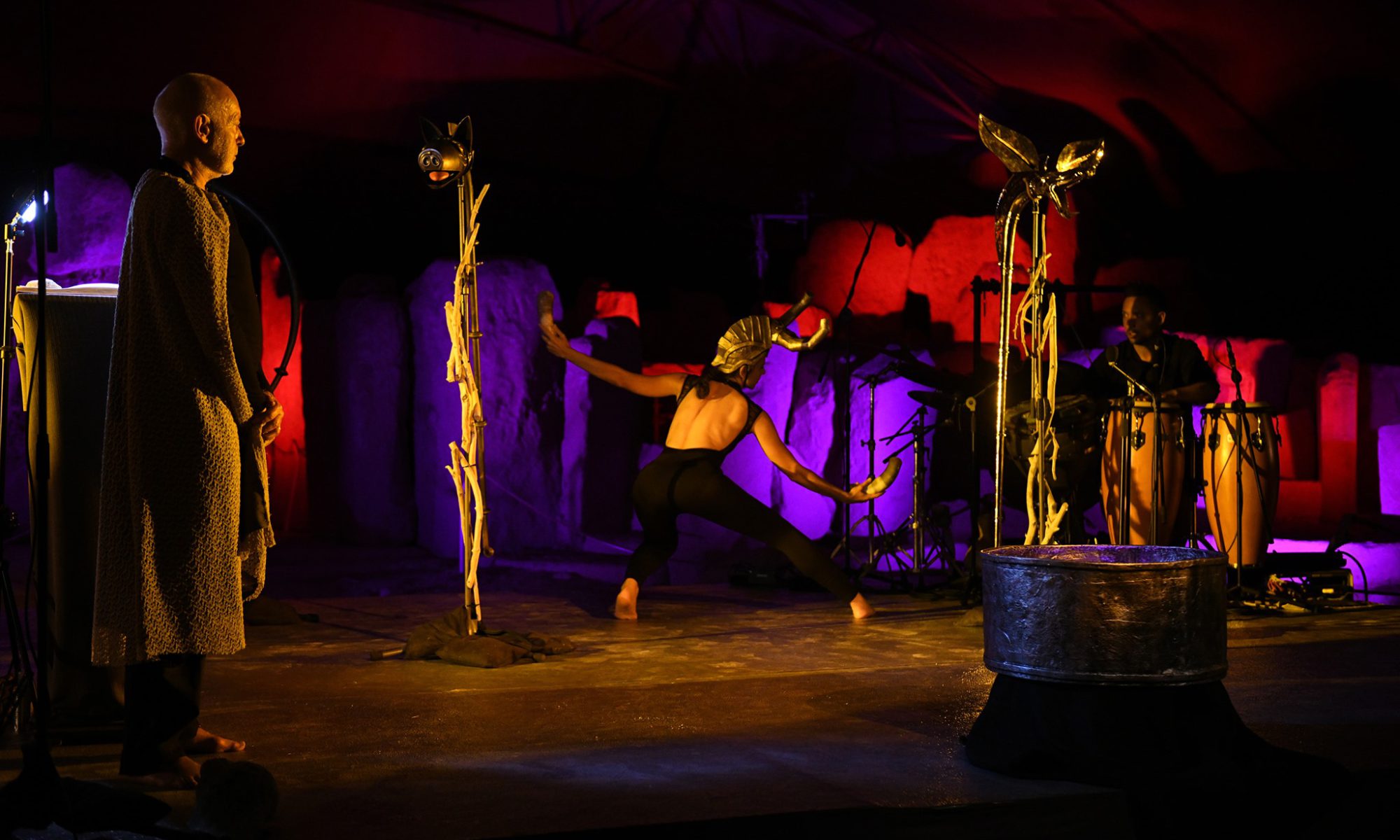Pandora’s Box
Pandora’s Box is a trio which combines music of the late medieval and renaissance periods with contemporary composition, improvisation, poetry and physical theatre. They weave a subtle tapestry of words and music, poetry of love and intrigue from the courts, pilgrim routes and cloisters of medieval and renaissance Europe to gritty modern sound worlds. Since 2015 they have also developed a unique soprano, alto tenor & bass trombone quartet with Swedish virtuoso soprano trombone player Torbjorn Hultmark.
Pandora’s Box has performed throughout the UK and internationally, including the Edinburgh Festival, Galway Early Music Festival, Setubal Festival, Cumnock Tryst, and International Trombone Festival, California. The ensemble also featured as recording artists on John Kenny’s soundtrack to TNT Theatre Co.’s “The Hunchback of Notre Dame”
The members of the trio are:
Emily White: alto & tenor sackbut, trombone, baroque violin, voice
Miguel Tantos Sevilliano: alto & tenor sackbut, trombone, voice
John Kenny sackbut, alto, tenor & bass trombone, recorders, voice
Biographies:
Emily White is professor of trombone and sackbut at The Guildhall School of Music and Drama, The Royal Welsh College of Music and Drama, and Wells Cathedral School. She is a member of The English Cornett and Sackbut Ensemble whose 16 discs include Classic FM disc of the month, BBC Choice, several Gramophone Awards and Diapason d’Or winners. She also plays principal regularly for Il Giardino Armonico in Italy. She loves the freedom that can be found in early music performance and contemporary music. Emily also plays baroque violin and is in the ground-breaking ensemble, In Echo, as a sackbut and violinist.
Miguel Tantos-Sevilliano is a former Principal Trombonist of the Navarre Symphony Orchestra and The Santiago Philharmonic Orchestra. As an early music specialist, he has worked with some of the world’s most prestigious ensembles including, English Baroque Soloists, The Sixteen, English Cornett and Sackbut Ensemble, Freiburg Baroque, the Academy of Ancient Music and Tafelmusik. He is also a member of the theatre troupe Wonderful Beast and has a particular talent for integrating music, acting and dance, which has led to extensive involvement in educational projects world-wide, including places like prisons, hospitals, schools, special needs centers.
Carnyx Brass


Carnyx Brass, directed by John Kenny, was founded in 2005. The group was originally a professional ensemble, comprising Paul Archibald on trumpet, Etienne Cutaja on horn and John Kenny on trombone. This trio enjoyed national and international success, commissioning new works and performing and broadcast throughout the UK and in Europe. This trio disbanded after several years when Paul Achibald became Head of Wind, Brass & Percussion at the Guildhall School of Music & Drama in London, and Etienne Cutajar returned to his native Malta to take up the position of principal horn of the Malta Philharmonic. However, the group re-formed in 2019 bringing together former members of Carnyx Youth Brass, who are now professional musicians working in a wide variety of styles internationally.

Carnyx Youth Brass was founded in 2006, based at St Mary’s Music School in Edinburgh, but also drawing in young players from across Eastern and Central Scotland. Many of the players have also been talented composers and arrangers, and in 2007 five members of the group were commissioned by the YouRopeTogether Festival in Germany to compose and première their own compositions in the Essen Philharmonic Hall, broadcast by Deutche Funk radio. From its inception, arranging and composing had remained a vital part of the group experience.
In 2015 the group recorded its first CD album, Stormchaser, combining original music by group members with brass classics. All the individual players who have passed through the group now pursue professional performing careers throughout the UK and Europe. In 2022 ten past members reunited to give the world premieres of three works by composers who members of the group from 2005 to 2008: Helen Beauchamp, Brendan Musk and Patrick Kenny. The project was a celebration of the end of the Pandemic, and took its name from an opening fanfare composed for the project by Matthew Rooke, Bright Horizons. Directed by John Kenny in collaboration with the London based choir Eclectic Voices and the choir of St Giles Cathedral Edinburgh, the programme played to capacity audiences in London and Edinburgh.
Carnyx Youth Brass offers talented and enthusiastic young brass players based in Scotland the opportunity to develop their skills in the art of brass ensemble performance at the highest possible level. A junior ensemble for younger, intermediate level players was initiated in July 2024.
Carnyx & Co gratefully acknowledges the financial support of The William Grant Foundation, Hope Scott Trust, the William Syson Foundation, Eclectic Voices new music fund, and Buffet-Crampon, without whose generosity, our work would not have been possible.

Initiated in July 2024, Carnyx junior brass offers enthusiastic younger players the opportunity to experience ensemble playing in an atmosphere that is both technically challenging and hufely enjoyable. The group is open to young people based in Edinburgh and Lothians aged 10 to 14 years, who have achieved approximately ABRSM grade 4 to 5 level. Rehearsals will generally take place on Sunday mornings in central Edinburgh.

Locking Horns
Etienne Rolin: flutes, basset horn, glissotar, sound painting, voice.
John Kenny: trombones, carnyx, recorders, conch shells, voice.
Etienne Rolin, a Franco-American composer based in Bordeaux and John Kenny, an Anglo-Irish composer based in Edinburgh, have enjoyed a close friendship and fertile creative collaboration since 1983, following a chance encounter at the CDMC ( centre de documentation de la musique contemporaine )in Paris. Rolin was in town to be at the premiere of his orchestral piece Jardin Baroque, commissioned by Pierre Boulez and to be premiered that night. Kenny was in Paris to give a series old solo recitals, following his prizewinning performance at the Gaudeamus International Competition in Holland. A few days later, they recorded their first album of improvised music, and have continued to explore ideas across styles and instrumental combination in over 30 notated compositions and over 100 live and recorded improvised performances and sessions in the UK and France.
Both Rolin and Kenny are improvising composers, and for both of them language and theatricality is often a key element and inspiration for their work. Highlights of Rolin’s compositions featuring Kenny include locking Horns for saxophone and carnyx, Embracing the Unknown for trombone, harp and string quartet, Quick Sands alto voce and Spirits in Stone for solo trombone, and most recently Travelling trombone concerto – a completely improvised, sound painted work for large ensemble and trombone solo. Kenny’s works featuring Rolin include the scores for the TNT Theatre/American Drama Group Europe touring production Moon Palace and Tartan Chameleion’s Edinburgh Festival production Hypothetically Murdered, as well as a vast multi-media production The Secret House, set on the wild North East coast of Scotland, involving dance, theatre, film and puppetry.
Etienne Rolin’s compositions have been featured on three of John Kenny’s albums: Secret House, Embracing the Unknown and Locking Horns. The Locking Horns duo have released multiple albums on the EROL Records label, via Bandcamp. Find them at: https://etiennerolin.bandcamp.com/

Current projects include expansion to a trio with electro-acoustic composer and organist Jean-Marie Colin, and a large scale multi-media project, Tintignac Revelation. Drawing inspiration from the physical environment of the Correze region of France where the magnificent Tintignac Carnyx was discovered, Locking Horns collaborate with soprano Sarah Brabo, percussionist Lou Renaud- Bailly, Jean-Marie Colin performing on a revolutionary electronic sound and vision instrument, the karlax, Patrick Kenny on carnyx and trombone, and poet Jessica Saraf, to develop a 90 minute site specific multi-media sound portrait of the place and the instrument.
Dragon Voices
– the Gundestrup Cauldron brought to life!

Dragon Voices perform music on multiple instruments, including trombones, sackbuts, Deskford Carnyx, Tintignac Carnyx, Loughnashade Horn, Alphorn, Conch shells, animal horns, pod trumpets, and Etruscan litus and cornu – a unique experience of hearing the great horns of the ancient Celtic and Etruscan world played in ensemble.
Patrick Kenny grew up in Edinburgh with the voice of the carnyx in his ears. Already a busy freelance trombonist and composer, he made his televised debut performance on the Deskford Carnyx at the age of 22 for the re-opening of the National Museum of Scotland in Edinburgh in 2011, and has since gone on to perform internationally on the instrument both as a soloist and in duo with his father John Kenny. As members of the European Music Archaeology Project, Patrick and his father John have performed as Dragon Voices duo throughout Europe, and in May 2017 made their CD debut on the album Set Upon the Rood, (Delphian Classics 34154) in John Kenny’s “The Deer’s Cry” for Deskford Carnyx, Loughnashade Horn, and the choir of Gonville & Caius College, Cambridge, directed by Geoffrey Webber.

In 2022 they were joined by Ian Sankey, also a leading trombone soloist and composer based in Newcastle upon Tyne, to give the world premiere of Gundestrup Rituals by John Purser at the Cumnock Tryst Festival, directed by Sir James MacMillan.
The Gundestrup cauldron is a richly decorated silver vessel, thought to date from between 200 BC and 300 AD. This places it within the late La Tène period of Celtic culture, and it is the largest known example of European Iron Age silver work (diameter: 69 cm, height: 42 cm. Both its interior and exterior surfaces heavily decorated with repouss’ work, hammered from beneath to push out the silver, as well as extensive gilding and some use of inlaid pieces of glass for the eyes of figures. The cauldron was found in Denmark, not made there or nearby; it includes elements of Gaulish and Thracian origin in the workmanship. The cauldron’s imagery is a mysterious blend Celtic pantheon, and Celtic mythology with iconography wich seems to be derived from the art of the ancient Near East, and there are intriguing parallels with ancient India and later Hindu deities and their stories. However, among the most specific details that are clearly Celtic are the group of three carnyx players, and this image was crucial to the reconstruction of the Deskford Carnyx, and the starting point of our understand of how it might be held and played.
In the Gundestrup image a line of warriors bearing spears and shields marching to the left towards a giant horn headed figure, followed by a warrior with no shield, bearing a sword, and wearing a boar-crested helmet. Behind him are three carnyx players. In front of this group a dog leaps up, perhaps holding them back. The horned giant holds a man upside down, apparently with ease, and apparently is about to immerse him in a barrel or cauldron. Above this ceremonial procession a tree lies horizontal, and above this, perhaps symbolically in a other world, warriors on horseback with crested helmets and spears ride away to the right, led by a horned serpent. Significantly, the heads of the carnyx are above the tree which separates the lower and upper worlds. This is not a scene of battle, but a ritual in which fallen warriors are dipped into a cauldron to be reborn into their next life, or afterlife.

It was to the remarkable polymath John Purser that we owe the rebirth of the Carnyx. Composer, musicologist, broadcaster, poet and playwright – In 1991 John Purser initiated and directed the project which led to the reconstruction of the Deskford Carnyx. Thirty years later, with the generous support of the William Grant Foundation, Carnyx & Co was able to commission a 3rd Deskford Carnyx and commission the Purser’s music and poetry for Gundestrup Rituals, animating those mysterious and compelling images with three carnyces for the first time in 2,000 years.
Mouhpiece of the Gods
This title refers to both a solo lecture recital and a dance theatre performance. In the solo performance John Kenny tells the story of the rediscovery of the carnyx and how it fits into the world history of “lip-reed” instruments from prehistory to the 21st Century. During the performance he plays all of these instruments.Photo of JK with instruments

The dance theatre production was premiered on the island of Malta, and is a dramatic realisation of the story told in the lecture recital, but with a poetic script by John Purser and composed music by John Kenny, with percussion, dance, light and sound projection. Photo dancce
Headspace Ensemble and Clarence Adoo.
What is the Headspace instrument?
Headspace is a virtual instrument. Its sounds are created through a computer using a massive sound-bank. In 1999, Carnyx & Co. received funding from the Diageo Foundation to commission composer and sonic inventor Rolf Gehlhaar (1943 – 2019) to develop a new musical instrument for Clarence Adoo, a leading trumpeter. Clarence was left paralysed from the neck down following a car accident in 1995. See link
Our challenge was to enable Clarence to re-engage with fellow performers at the highest professional level. HeadSpace is a highly sophisticated, powerful electronic musical instrument. It is controlled by subtle movements of the player’s head, coupled with small but delicate, precise air columns. This has given Clarence the opportunity to express himself once again as a professional musician.
HeadSpace is controlled by subtle movements of the player’s head, coupled with small but delicate and precise air columns. It has been an extremely significant part of Clarence’s rehabilitation, and has facilitated his return to performing.
HeadSpace Ensemble
In 2005 HeadSpace received its first public airing at the St Magnus Festival on Orkney. Festival Director, Ian Ritchie, commissioned John Kenny to compose a piece to explore the new instrument invented by Rolf Gehlhaar. Kenny scored his piece for the HeadSpace instrument with trumpet doubling flugelhorn, trombone doubling carnyx, and live electronics.
Since 2006 this group of artists has gone on to develop new repertoire under the name of HeadSpace Ensemble, comprising: Clarence Adoo on HeadSpace, Torbjorn Hultmark on trumpet and flugelhorn, John Kenny on trombone and carnyx, and Chris Wheeler as sound designer.
Following their debut at the St Magnus Festival, the group has appeared at Sage Gateshead, the City of London Festival and three tours of Portugal. They have also featured at the Cumnock Tryst festival, directed by Sir James MacMillan, and at a sell-out collaboration with the Wynton Marsalis quartet at the London Barbican Centre.
In 2021 they collaborated with composer Cevanne Horrocks-Hopayian to create multi-media film collaboration, Cap-O-Rushes which premiered at the 2021 UK Culture, Health & Wellbeing International Conference. The group’s repertoire includes music by Nigel Osborne, Rolf Gehlhaar, John Kenny and Torbjorn Hultmark. See link
The performers:

Clarence Adoo developed a passion for music at an early age, joining the Young People’s Salvation Army band at six as a cornet player. He studied trumpet at the Royal College of Music, becoming a busy freelance musician playing a diverse range of styles including Cliff Richard, West End shows, jazz with Courtney Pine, the London Sinfonietta, the Bournemouth Symphony Orchestra and the BBC Philharmonic.
In 1992, Clarence moved to Newcastle to become a member of the Royal Northern Sinfonia. However, in 1995 he was involved in a tragic car accident, which left him paralysed from the neck down. It appeared that his musical career was over, until the development of the HeadSpace instrument. Clarence explains:
“The headset I am wearing has sensors either side and when I move my head it moves a mouse on the screen- the blow tube down the side of the headset works as the left click of the mouse and the blowing activates different sounds and notes”.
The Headspace instrument has been an extremely significant part of Clarence’s rehabilitation and has facilitated his return to performing. In addition to the HeadSpace Ensemble, Clarence is a founder member of the ParaOrchestra, which was voted by the Performing Rights Society as Britain’s Best Orchestra for 2025. He was also involved in starting up the Royal Northern Sinfonia Inclusive Orchestra, which performs concerts throughout the year. Working alongside Open Orchestra and National Open Orchestra Clarence worked on “Clarion”, which is a simplified instrument based on Headspace. This allows many young people from special needs schools an access to music. Clarence has taken part in television, radio programmes and discussion panels around the world.
In recognition of his services to music and the way he has inspired people since his accident, Clarence has been awarded an Honorary Doctorate from Northumbria University, Fellowship of the Royal Academy of Music, and an MBE. Clarence Adoo and the HeadSpace instrument were featured in the closing ceremony of the 2012 London Paralympics as well as at a recent TED-X presentation in Brussels.

Torbjörn Hultmark is a Swedish/British musician, composer and teacher based in London His playing career has taken him to 25 countries with orchestras and ensembles such as the London Sinfonietta, Ensemble Modern, the Philharmonia Orchestra and the Chamber Orchestra of Europe, as well as film and TV session work and as a soloist including on BBC Radio 3 and with the BBC Philharmonic. Torbörn is a teacher and ensemble coach at the Junior Department of the Royal College of Music. Published by Composers Edition, Brass Wind Publications, his music has been performed extensively and recorded on CD as well as broadcast in Britain and worldwide. Torbörn is at the forefront of the development and performance of new music involving improvisation and live electronics.
Martin Parker first performed with HeadSpace Ensemble in 2016 at a festival and conference held at the Casa da Música in Porto. Following this, Martin assisted Rolf Gehlhaar with software development and programming of the HeadSpace instrument and has been full time sound projectionist with the ensemble since the 2021 multimedia production Cap O’ Rushes, filmed at Brancepeth Castle, County Durham. As a composer, improviser and soloist with laptop, his work focuses on encounters between computers, people and places. Based in Edinburgh, he has performed and collaborated internationally with theatre companies, symphony orchestras, visual artists and ensembles. Martin has been Artistic Director of Edinburgh’s Dialogues Festival and is Academic Director of the University of Edinburgh’s MSc in Sound Design.



